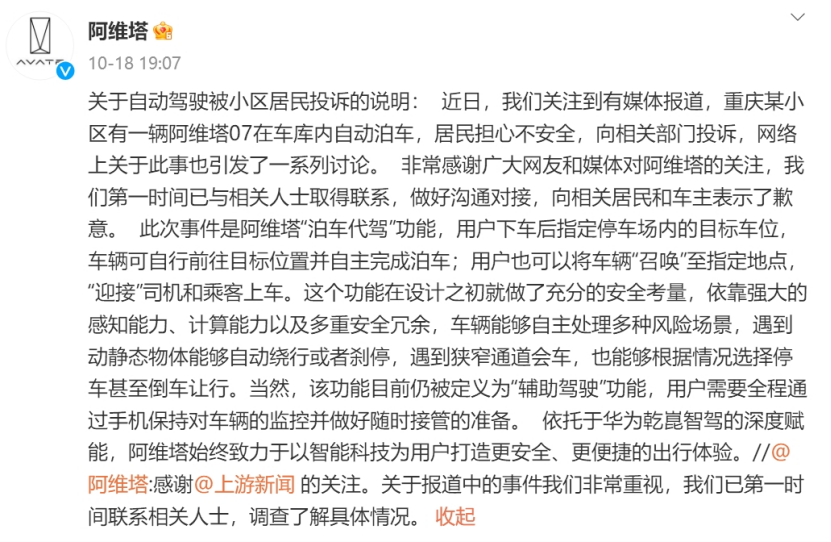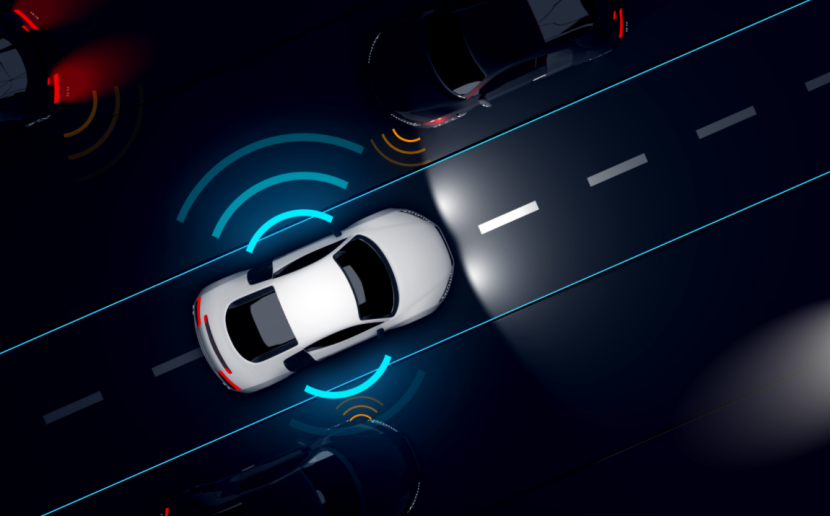L3 intelligent driving nears a 'critical point', with 'autonomous parking' leading the controversy
![]() 11/05 2024
11/05 2024
![]() 608
608
At the 2024 World Intelligent Connected Vehicle Conference held in October, the latest information released by regulatory authorities and research institutions revealed that combined driving assistance (Level 2) has been implemented on a large scale. From January to June this year, the penetration rate of Level 2 new vehicles for passenger cars in China reached 55.7%. The safety requirement system for autonomous driving above Level 3 has basically taken shape, with mainstream automakers establishing systematic safety protection capabilities to support large-scale applications of autonomous driving. Globally, research and development of intelligent connected vehicles at Level 3 and above is accelerating. Germany and Japan have completed type approval for models with Level 3 autonomous driving capabilities, while the United States has permitted vehicles with Level 3 autonomous driving capabilities to be driven on roads.
However, on the eve of the launch of Level 3 vehicles, the 'autonomous parking' function has sparked legal issues. Recently, AITO became a defendant due to its 'valet parking' function. The incident originated when Ms. Ren, who resides in Chongqing, witnessed multiple times in her underground garage an AITO vehicle autonomously driving and parking without a driver. The resident was concerned about who would be responsible in the event of an accident and hoped that relevant departments would intervene, ultimately filing a lawsuit against AITO.
In response, the car owner stated that they were testing the new AITO's 'valet parking' function and deliberately maintained a distance to test the vehicle's response. The owner also mentioned that since the manufacturer had introduced this feature, they were entitled to use it.
In response to this incident, AITO officially responded promptly, sparking new reflections: Will similar controversies and disputes increase before Level 3 vehicles are officially allowed on roads in China?
▍Still requires users to 'control risks'
As early as 2016, Tesla had already achieved 'autonomous parking,' and this function is now widespread in models with advanced intelligent driving capabilities.
The function that triggered the lawsuit against AITO, according to official statements, is the 'valet parking assist' in the parking assistance system. It is important to note that 'valet parking assist' remains an 'assist' and cannot operate completely independently of human control. In other words, it is still a Level 2 parking function.

Regarding the feedback from Ms. Ren, AITO responded on its official Weibo account, stating that they had immediately contacted both parties involved and communicated effectively, expressing apologies to the residents and car owner.
The response indicated that the incident involved the AITO 'valet parking' function, where users can designate a target parking spot within a designated parking lot after exiting the vehicle. The vehicle can then autonomously navigate to the target location and park. Users can also 'summon' the vehicle to a specified location to 'greet' the driver and passengers.
'Including the 'valet parking' function, all our current intelligent driving features are Level 2 assistance functions,' said Dong Zhihua, Director of Intelligent Driving at AITO, in his response to the media. As an assistance function, users need to independently judge usage scenarios and control usage risks after thoroughly understanding it.

An industry insider in the autonomous driving sector told Auto Insight that when using autonomous driving functions such as autonomous parking and valet parking, the driver, as the user of the vehicle, has the obligation to observe the surrounding environment and vehicle conditions. In the absence of system failures or quality issues with the vehicle, if damage is caused to the rights and interests of others, the driver should bear primary responsibility for the accident. In the event of an accident with serious consequences, the driver must also bear corresponding legal responsibilities. However, the intelligent driving functions of currently available vehicles comply with national laws, and there are no mandatory regulations prohibiting their use.
▍Regulations on intelligent driving need improvement
Currently, in the field of new energy vehicles, autonomous driving and unmanned intelligent driving have become selling points for many emerging automakers and core promotional points for capturing market users.
However, with the popularization of intelligent driving, various safety incidents have also occurred. This includes incidents involving Tesla and Uber test vehicles in overseas markets, as well as domestic brands such as NIO and Lixiang.
From a legal and regulatory perspective, the intelligent driving functions currently allowed for mass production applications are classified as 'driving assistance' rather than full autonomous driving. Essentially, all implemented functions are still at Level 2. Therefore, no companies have directly promoted Level 3 autonomous driving functions, leading to the emergence of concepts such as 'L2+', 'L2.5,' and even 'L2.9.' However, ultimately, they are not Level 3.
Although China has opened L3 pilot projects in some regions and cities and allowed L4 Robotaxi operations, there is no official legal authorization for L3 passenger vehicles.

This lawsuit also exposes the contradiction between the rapid development of autonomous driving technology and the lag of existing laws and regulations. In July this year, the Beijing Municipal Commission of Economy and Information Technology solicited public opinions on the "Regulations on Autonomous Vehicles in Beijing (Draft for Comment)" (hereinafter referred to as the "Draft"), stating that Beijing plans to support the use of autonomous vehicles for urban bus and tram passenger transport, online car-hailing, car rental, and other urban travel services. The "Draft" also provides clear regulations on the determination of liability for accidents involving unmanned vehicles.
The "Draft" proposes that traffic violations occurring during road travel should be handled and identified by the public security traffic management department in accordance with current laws and regulations. If there is a driver in the vehicle, the driver will be dealt with in accordance with the law; if there is no driver in the vehicle, the vehicle owner or manager will be dealt with.
Regarding the determination of liability for Level 3 and even Level 4 in the future, in November last year, four ministries and commissions jointly issued the "Notice on Carrying Out the Pilot Program for the Access and Road Travel of Intelligent Connected Vehicles." After the document was issued, AITO, Changan, Benz, ARCFOX, BMW, and IM Motors became the first batch of domestic enterprises to obtain L3 testing licenses.
The document mentions that if a traffic accident occurs when the vehicle's autonomous driving is not activated, responsibility will be determined according to current regulations. If the vehicle's autonomous driving is activated and insurance compensation is insufficient, responsibility will be determined according to traffic regulations.
This means that after Level 3 and Level 4 functions are liberalized in the future, automakers will also become responsible entities and assume related responsibilities.
From 2022 to the present, more than a dozen cities in China have enacted legislation for autonomous driving, such as the Regulations on the Management of Intelligent Connected Vehicles in the Shenzhen Special Economic Zone and the Regulations on Promoting the Development of Intelligent Connected Vehicles in Wuhan. In November 2023, the Ministry of Industry and Information Technology and other departments allowed the access and road travel of intelligent connected vehicles at Levels 3 and 4, but the public has not yet driven vehicles at these levels.
At the same time, the enacted autonomous driving legislation is only local, and there are no clear national laws and regulations. Some experts have stated that intelligent driving-related technologies have been developing for many years and are currently on the eve of 'going on the road.' Legislative work should be accelerated; otherwise, it will hinder the development of new technologies, consumer adoption of new technology products, and the growth of the new technology industry.
Typesetting by Yang Shuo | Image Sources: AITO, Shutterstock






